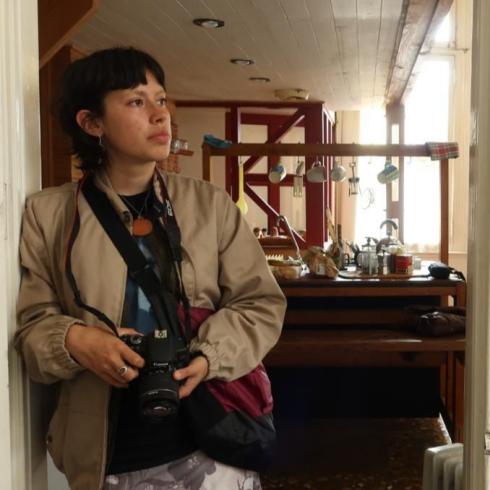This morning, our IES Abroad group set out on a field trip to El Escorial, a magnificent royal palace and monastery nestled in the Sierra de Guadarrama mountains. With a small group of just five of us, it felt like an exclusive behind-the-scenes tour of Spanish history. We met at Moncloa and boarded a bus for the hour-long journey, which I spent alternating between admiring the scenic countryside and trying to get the perfect angle for an Instagram-worthy photo of the rolling hills.
When we arrived, the town was draped in a thick layer of fog, giving it an almost mystical vibe—as if we’d stepped into a chapter of a fantasy novel. Naturally, our first priority was food. We found a quaint little cafeteria near the entrance, and I treated myself to a desayuno ibérico: crusty bread topped with jamón, olive oil, and a sprinkle of salt, paired with a piping hot café. Simple yet divine, it was the kind of meal that reminds you why Spain’s culinary reputation is unmatched.
Exploring El Escorial: A Monument to Majesty
Our tour began with Mario, our guide for the day, who greeted us with a warm smile and a quick quip about how he hoped we had “the stamina of monks” for all the walking ahead. He wasn’t kidding—El Escorial is massive, a labyrinth of rooms and corridors that seem to unfold endlessly. Mario shared that the palace was commissioned by King Philip II in the 16th century as a royal residence, monastery, and mausoleum, all rolled into one. A true Renaissance man’s dream.
Here’s a closer look at the highlights of our visit:
- Library: This was easily my favorite part of the tour. Imagine rows upon rows of ancient manuscripts housed in a grand hall with gilded shelves and frescoed ceilings. The murals above depicted the arts, sciences, and humanities in vivid detail—each figure exuding an air of importance. Mario explained how Philip II wanted the library to symbolize the vast intellectual achievements of his reign. Fun fact: the books are stored with the spines inward and pages outward to protect them from dust.
- The Basilica: Walking into the basilica was like stepping into a cathedral designed to awe and overwhelm. The sheer scale of the dome, the intricate altars, and the grand marble columns were breathtaking. Mario described how its design reflected the Counter-Reformation ideals, aiming to inspire devotion while showcasing the power of the Catholic Church. The acoustics were incredible—even a soft whisper seemed to echo endlessly.
- Royal Tombs: The Pantheon of Kings and Queens is where Spain’s monarchs rest for eternity. It’s a circular chamber made entirely of marble and gold, with niches for each king and queen. It felt eerie yet dignified—a reminder of the inevitability of time, even for royalty. One classmate joked, “This is a bit much for a final resting place—no IKEA caskets for these guys.”
- King's room: This space was as practical as it was impressive. With direct views of the basilica, the king could attend Mass without stepping foot outside his private quarters. Mario explained how this design reflected Philip II’s deep piety but also his declining health toward the end of his life. “Efficiency meets faith,” as Mario aptly put it.
- Gardens: After exploring the interior, we stepped outside to the meticulously manicured gardens, where nature seemed to compete with the grandeur of the architecture. The geometric hedges and fountains created a sense of tranquility, and the views of the surrounding mountains were simply stunning. The fog that had shrouded the landscape all morning began to lift, revealing bursts of red, orange, and gold in the autumn foliage. The sunlight filtered through the remaining mist, creating a dreamlike effect that felt almost surreal.
As we strolled through the gardens, taking in the crisp mountain air, it was hard not to feel a sense of peace. The silence was only broken by the occasional bird call or the crunch of leaves underfoot. Standing there, gazing at the dramatic backdrop of the Sierra de Guadarrama, it was easy to see why Philip II chose this spot for his grand project. This field trip was more than just a history lesson—it was a chance to step back in time and immerse myself in the legacy of Spain’s Golden Age. Whether it was the awe-inspiring architecture, the serene gardens, or Mario’s witty commentary (he deserves his own Netflix special, honestly), the experience was unforgettable.








Layla Santiago
An avid hiker and rookie musician, I love being outdoors and jamming on the guitar whether solo or with friends. Having Mixtec, Mexican, and Polish heritage has allowed me to appreciate diverse cultures and perspectives.















